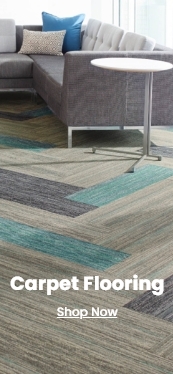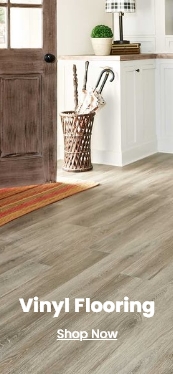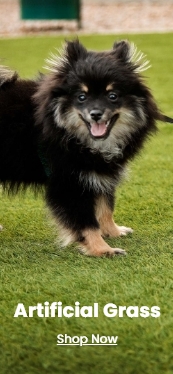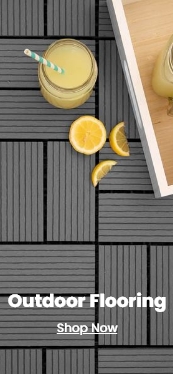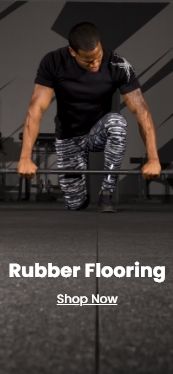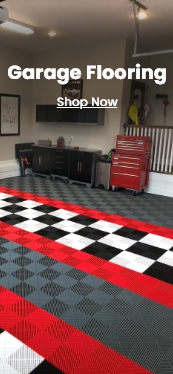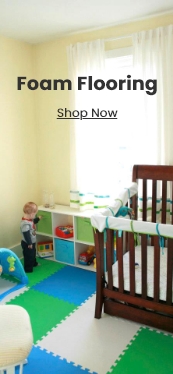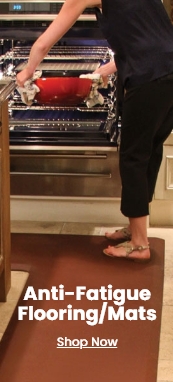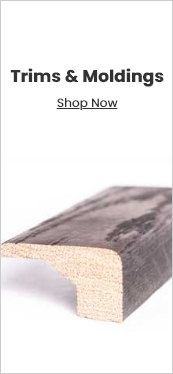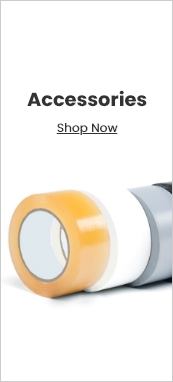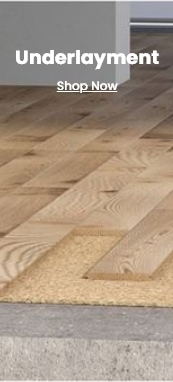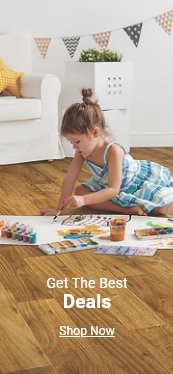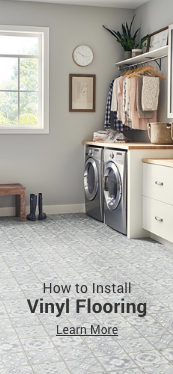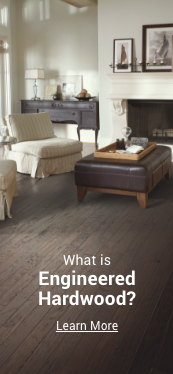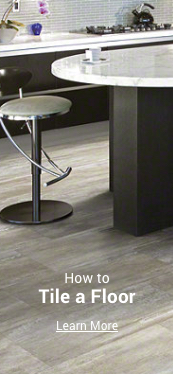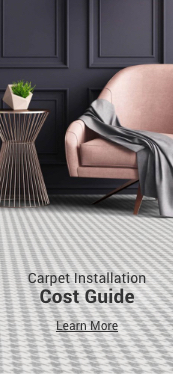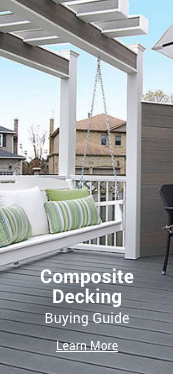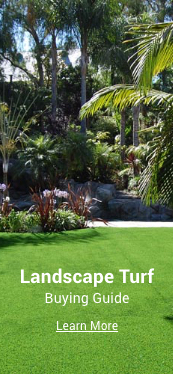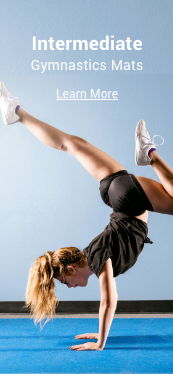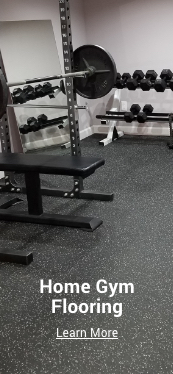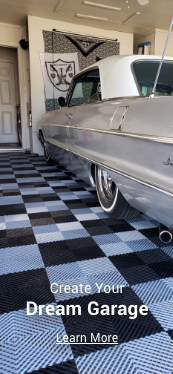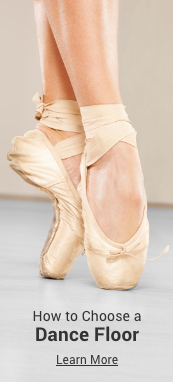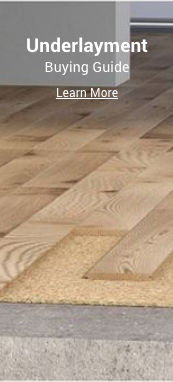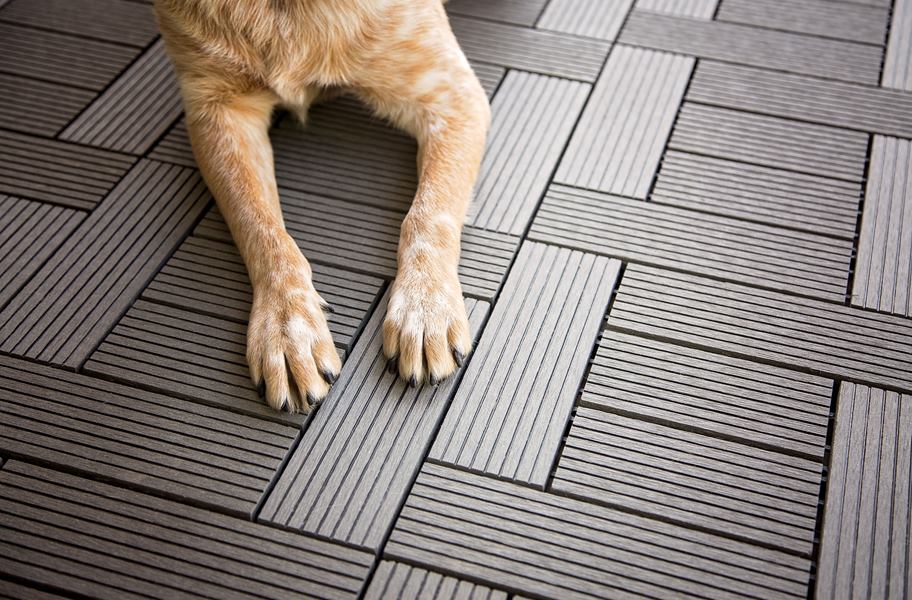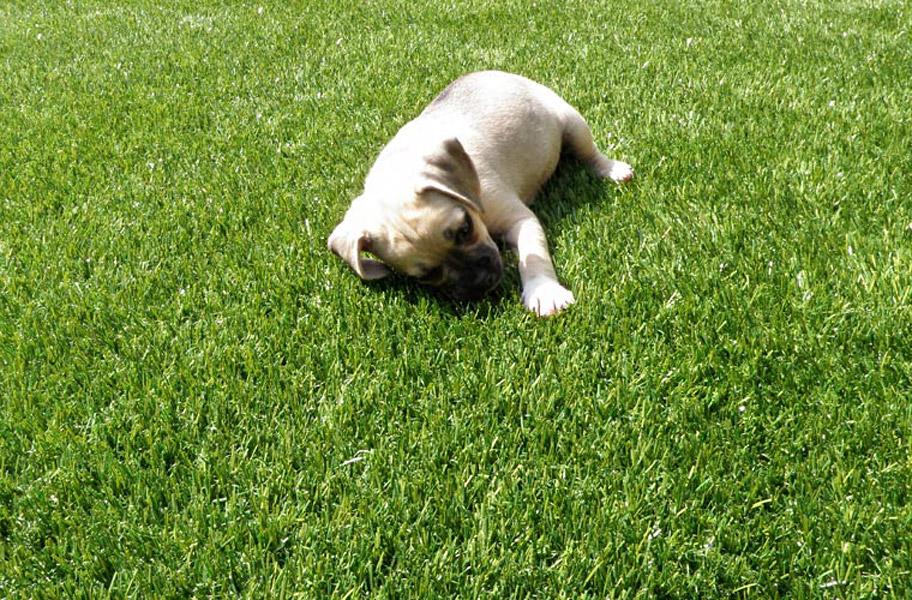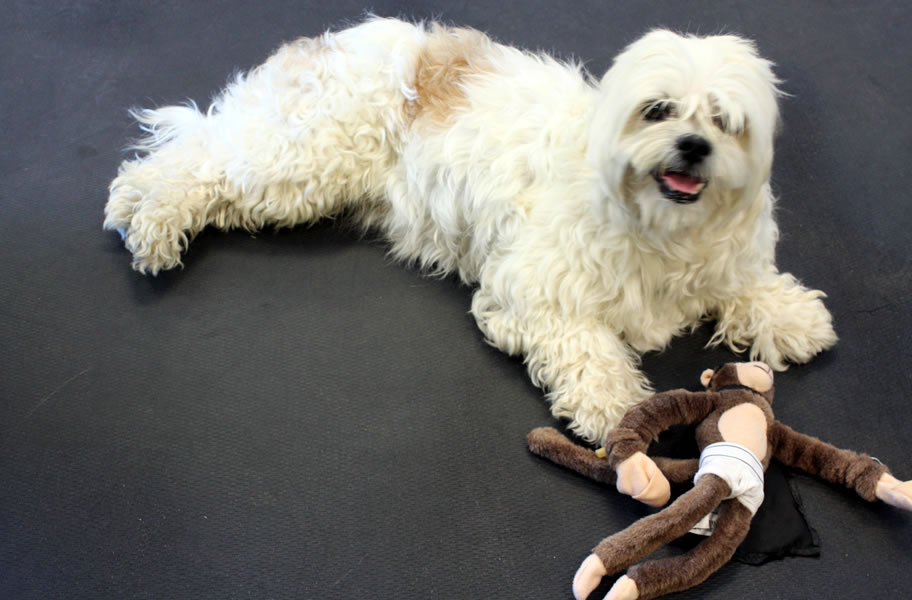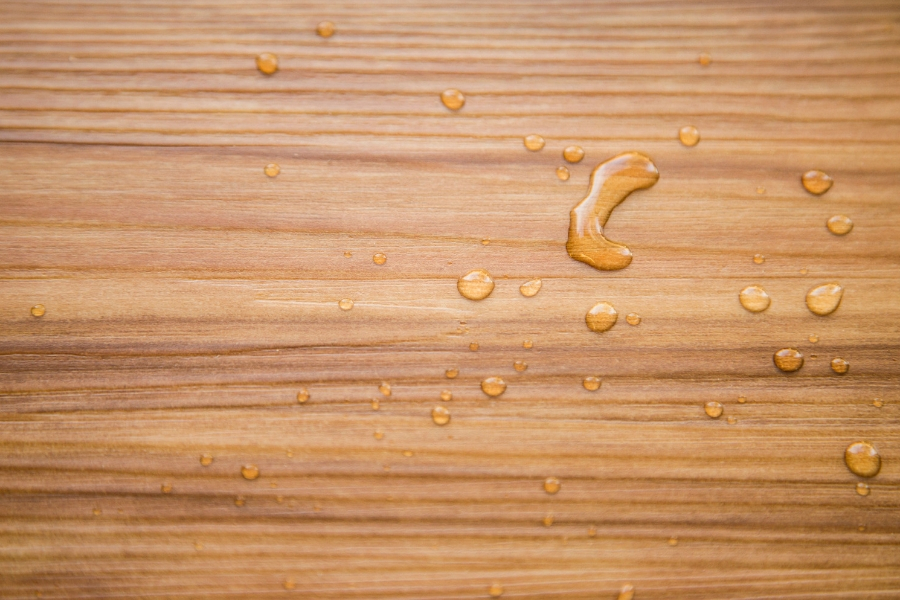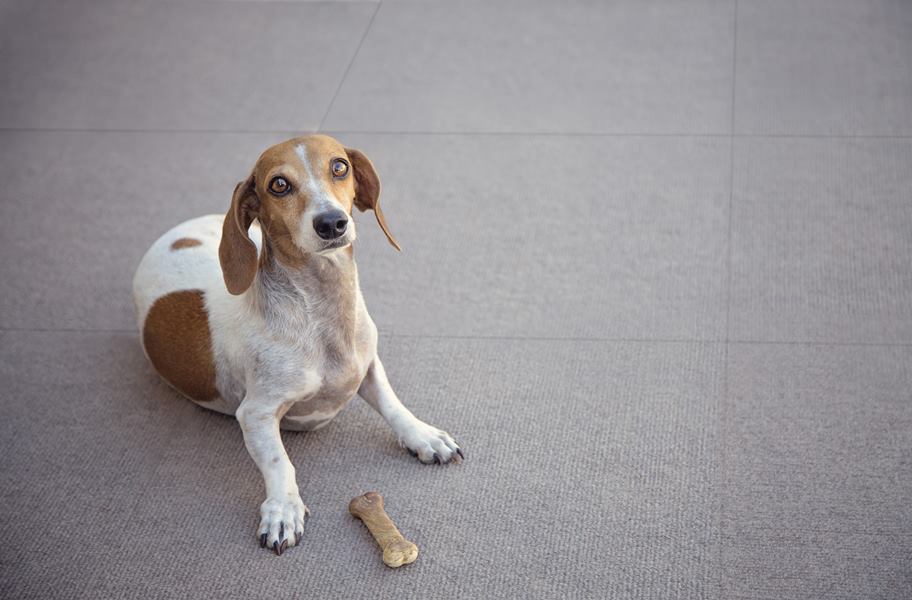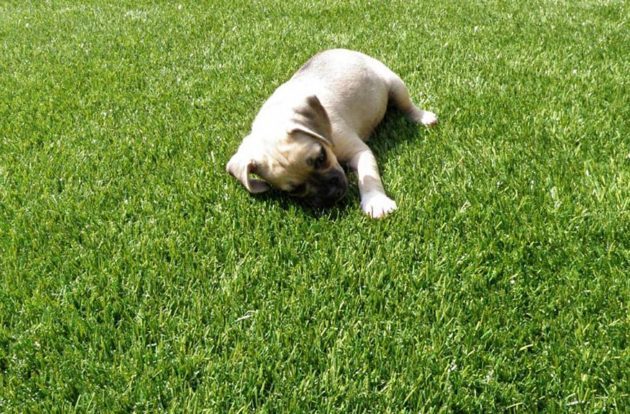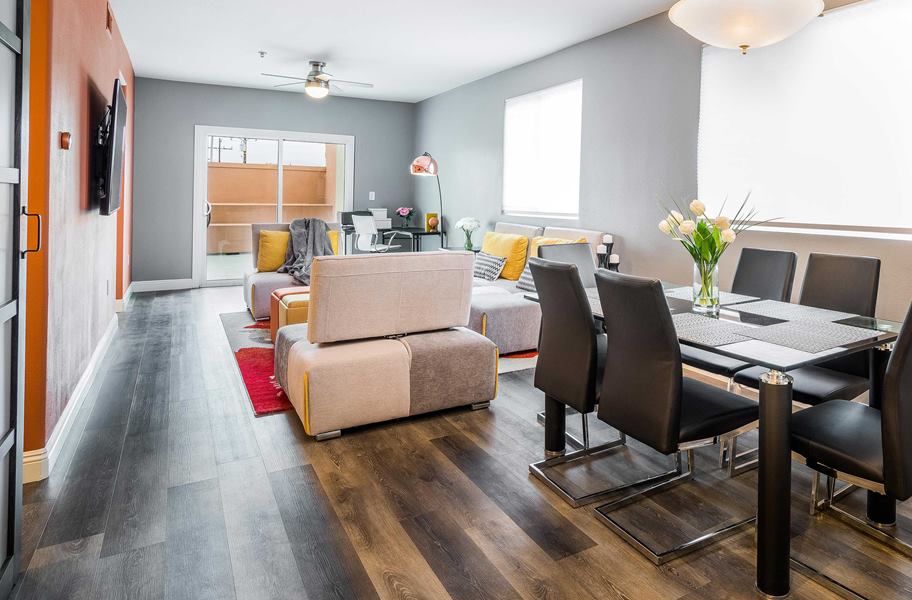
Pet-Friendly Flooring Buying Guide: The Best Floors for Paws, Claws and Hooves
This ultimate Pet-Friendly Flooring Buying Guide will help you find a floor that is both comfortable for pets and resilient to their paws, claws and hooves – while still adding style to your space.
One of the best things about being a pet owner is coming home to that wagging tail, the sign of an animal who is overly thrilled to see you. I still remember my childhood dog, Holly, darting to the back door whenever she heard the garage door opening, indicating that my parents – her real caretakers – were home.
Every time, I’d hear her nails hit the hardwood as she ran, followed by a screech as she skidded across the kitchen floor, and, finally, a thud when she bottomed out. Poor Holly. She was just so excited!
Wouldn’t it be great if our sweet little dogs and pets could greet us at the door without falling on their bottoms, risking bruised bones and egos just to show their excitement?
Enter pet-friendly flooring.
Whether you’re purchasing or renovating a home or looking to open a commercial building for pet care, consider what type of flooring will be best for the animal traffic you have. In this pet-friendly flooring guide, we’ll cover the best flooring for dogs, cats and other animals to help you find the right solution for you.
Keep reading to learn more about the pros and cons of popular flooring options, how to make your pet-friendly flooring last and get the answers to your most common questions.
| Related Content >> Best Carpet for Pets |
What is Pet-Friendly Flooring?
The best flooring for pets should be comfortable and safe for the animal. Yet, the floor also needs to be resistant to their not-so-attractive qualities – sharp nails, shedding hair, dirty paws, smelly accidents – you know, all those things we forget about when they’re looking at us with those sweet eyes.
What kind of floor will keep the pet and the owner happy? When browsing your pet-friendly flooring options, look for the following features:
- Comfortable for pets
- Stain resistant
- Scratch resistant
- Allows for good traction
- Waterproof
- Keeps with the look and feel of your home or building
It might be difficult to find all of these qualities in one floor, so determine which are most important to you to help guide your decision.
Where to Use Pet-Friendly Flooring
Here’s where to consider pet-friendly flooring:
- Home use:
- Interior
- Backyard
- Patio
- Doghouse
- Dog kennel
- Under kitty litter box
- Commercial use:
- Veterinary building
- Animal hospital
- Dog boarding facility or doggy daycare
- Other:
- Barns
- Horse stalls
- Dog parks
| Related Content >> What’s the Best Flooring for Dogs? |
The Best Flooring for Pets

Photo by Michael Sum on Unsplash
Pet lovers need a floor that satisfies both their personal taste as well as their animal’s comfort. Here’s our breakdown of the best flooring for pets to help you find safe and stylish flooring solutions.
Pet Turf
A pet-friendly flooring option for both indoors and outdoors, turf grass for dogs and pets has several benefits over the real stuff. Many turf rolls are made intentionally with a slight curl and flatter blades, making them more pet-friendly. Your pet will love rolling around in a soft bed of fake grass without pricklies poking at him.
The best part? Fido can run around all he wants without tearing up your grass, tracking mud in the house or catching fleas and ticks. Artificial grass is durable and less inviting for dogs to dig, not to mention you won’t see the usual brown spots from where he chooses to relieve himself. Alas, you don’t have to worry about watering pet grass or filling in holes of buried bones.
But turf grass for dogs isn’t limited to outdoor use. A pad of artificial grass is the best flooring for pets that have accidents. If you have to leave your pet indoors for a long period of time, place a turf pad near the back door. You’ll come home to sparkling floors and a happy pet!
| Related Content >> Pet Turf Buying Guide |
Where to Use Pet Turf
- Backyard
- Indoor potty for home or apartment
- Dog boarding shelter
- Dog grooming salon
- Dog park
What Makes Turf Pet-Friendly Flooring?
- Flat blades feel comfortable on the most sensitive paws.
- Short pile height aids in drainage, helping to create a sanitary and sterile environment.
Pros of Pet Turf
- Easy maintenance: No, you’re not getting out of picking up dog poop, but how does getting rid of the lawnmower sound to you? Synthetic grass is incredibly easy to maintain. The turf rolls themselves do the hard work for you by draining your pet’s liquids, reducing any worry of bacteria buildup or faded spots on your lawn.
- Indoor/outdoor installation: While Fido may love to play outside, he might not be psyched about going out there to relieve himself during a thunderstorm. Give him an indoor turf to use for emergencies.
- Non-toxic: Relax knowing your pet is playing on safe turf – no lead, heavy metals, or chemicals found here!
- Great playground for pets: Pet turf is both comfortable for pets to roll around on and durable enough to withstand their rough play. You and your animal both benefit from this pet-friendly alternative to natural grass. They get to run and play and you get to keep your nice yard!
- Perforated for superior drainage: Does the pup have a long day at home? A small turf pad makes a great potty area if your pet has to be left for a long period of time. Rolled turf features a short pile height which helps with drainage while keeping a sanitary, sterile environment.
Cons of Pet Turf
- The artificial turf will get warmer than natural grass in direct sunlight but can be cooled with the use of a hose.
- While you can install pet turf yourself, typically it’s best to hire a professional.
Pet Turf Installation
- Remove grass.
- Prep the base.
- Compact the base.
- Create a weed barrier (optional).
- Lay, fit and seam the turf. Seaming options include:
- Nails
- Glue and seam tape
- Staples
- Tuck the turf edges.
- Add infill.
Pet Turf Installation Tools and Accessories
Rubber
Rubber mats are growing in their popularity for horse stalls, barns, trailers, even dog kennels. What makes rubber an ideal bed for animals? The material is great for our furry friends for a number of reasons.
Animal flooring needs to be durable, able to withstand large horses and heavy traffic from hooves or paws. Rubber is the most durable flooring on the market. It is also non-porous, an essential quality in flooring for avoiding animal mishaps.
Rubber matting may be known for its durability, but it also provides comfort for animals. This material provides cushion and will reduce the amount of bedding you need for a large animal.
| Related Content >> The Ultimate Rubber Mats Buying Guide |
What Makes Rubber Pet-Friendly Flooring?
- Provides a comfortable bedding for animals
- Non-porous, durable flooring that can withstand pet accidents and messes
Where to Use Rubber Flooring for Pets
- Horse stall
- Horse trailer
- Barn
- Pig mats
- Cow mats
- Dog kennel
- Doggy daycare
- Animal training facilities
- Dog runs
Pros of Rubber Flooring for Pets
-
- Slip-resistant: Rubber flooring provides good traction and footing for animals.
- Comfort and safety: These mats provide a soft cushion for animals and keeps them warm from cold subfloors.
- Non-porous: Rubber horse stall mats will not harbor or grow bacteria.
- Durable: Rubber is a highly resistant material that can withstand the weight of heavy animals or heavy foot traffic, resulting in one of the most long-lasting pet flooring options.
- Low maintenance and easy to clean: Simply hose off any dirt or debris to keep your animal mats looking nice.
- Eco-friendly: Most rubber used to make animal mats comes from recycled tires and other materials.
Cons of Rubber Flooring for Pets
- Price: Rubber mat flooring can be costly to start, but you’ll save on other bedding for your animals and you’ll have a long-lasting, quality product.
- Mats may shift: Rubber horse stall mats will move around unless they’re anchored or secured by interlocking pieces.
Rubber Flooring Installation
Rubber mats are a consumer favorite because installation is typically a simple DIY endeavor. They can be placed over concrete, asphalt, wood or any level, well-compacted surface. You can also install them over decomposed granite and limestone fines. For limestone fines, make sure the fines do not exceed ⅛” in size.
Horse stall mats and interlocking rubber mat kits are simple to put together. Each kit comes with a layout showing how to position the mats in the stall. All you have to do is make sure your subsurface is prepared correctly.
If you are placing rubber mats in a horse stall or barn, we recommend a ¼” to ½” gap between the edge of the mat and the wall. Rubber can expand and contract in extreme temperatures, so be sure to leave some space.
Waterproof Vinyl
Waterproof vinyl flooring is the best floor for dogs and cats. It’s an inexpensive, waterproof, scratch- and stain-resistant flooring that is also comfortable underfoot. Choosing waterproof flooring for pets can make the usual animal cleanup much easier on yourself.
I know, I know, vinyl flooring has gotten a bad rap for a long time, but you can read all about the developments in vinyl flooring and how it compares to floors like laminate and linoleum. Waterproof vinyl flooring is the latest in luxury vinyl and one of the most durable flooring types around.
| Related Content >> Waterproof Vinyl Flooring Buying Guide |
What Makes Waterproof Vinyl Flooring Pet-Friendly?
- The ultimate choice for making pet clean up as easy as possible
- Stylish designs that won’t be ruined by wear and tear from playful pets
Where to Use Waterproof Vinyl Flooring for Pets
- Residential use (kitchen, living room, basement)
- Commercial use (veterinary office, animal grooming or boarding facility)
Pros of Waterproof Flooring for Pets
- Stain- and scratch-resistant flooring: The thick wear layer helps protect your vinyl floors from sharp claws, but you still want to keep your pet’s nails trimmed to be extra careful.
- Easy to clean: A quick wipe and disinfecting of the area will do the trick.
- Quiet underfoot: Play with your dog without waking up the rest of the family! Vinyl floors help reduce the sound of his playful paws.
- Waterproof: Well, this one’s obvious. With the spills and accidents that come with pets, you’ll want all the help you can get in keeping your floors looking great. The waterproof factor helps to do the maintenance for you!
- Realistic wood and stone looks: If there’s a look you want, you’ll definitely find it. Concrete, travertine, and slate are very popular when it comes to stone-look vinyl tiles. Wood-look vinyl comes in all the colors and finishes as real hardwood floors. These stylish trends in vinyl flooring make for a dream home to you and your pets.
Cons of Waterproof Vinyl Flooring for Pets
Waterproof flooring for pets really has no downside to it, but vinyl flooring in general has one drawback to point out:
- Less eco-friendly: Vinyl is still a man-made product and vinyl plants do contribute to some pollution. On the flip side, many vinyl flooring options are super eco-friendly. In fact, some are even Floor Score certified for indoor air quality, and some are made in the USA!!
Waterproof Vinyl Flooring Installation
Waterproof vinyl flooring is installed using an interlocking method. No glue, nails, or any adhesives. It’s literally that easy. Check out our video for DIY instructions:
SHOP WATERPROOF VINYL FLOORING
Other Pet-Friendly Flooring Options
Rubber, turf and waterproof vinyl are no doubt the best flooring for dogs and other pets, but when those options won’t suit you, fall on these backup pet-friendly floors.
Laminate
Laminate has been a hot flooring choice for some time now, and the real wood resemblance only continues to improve. Hard, durable and stain resistant, laminate flooring should be the clear-cut winner when it comes to finding the best flooring for pets, right?
While laminate is great for pet owners, it can also be very slippery for furry paws. The best laminate flooring for pets, especially if you have pets that are active or older, is a scraped/textured laminate. Really, they’re the prettiest anyway (IMO), and the texture will add some traction. This will help keep your best friend running around and playing for years to come.
If you’re contemplating bamboo vs laminate, bamboo will hold up longer if you have a large pup that loves to play fetch in the house. Yet, the nice thing about laminate is that scratches or marks aren’t as noticeable.
| Related Content >> Laminate Flooring Trends |
Pros of Laminate Flooring for Pets
- Durable and stain resistant: Laminate flooring has a strong wear layer that protects the floor from scratches, wear and staining, all the things pets love to test out on our floors.
- Easy to clean: Laminate flooring provides an easy clean-up after your pet. Simply take a damp cloth to clean up spills or sweep up pet hair.
- Scratches are less noticeable: While laminate is not a scratch-resistant flooring, its texture and appearance can disguise punctures from pet claws.
Cons of Laminate Flooring for Pets
- Can be slippery for paws: To make your laminate floor more pet-friendly, choose an option that has a textured or embossed finish which can help prevent your pet from slipping. If you’d rather have a smooth laminate floor, an area rug will help your pet feel safer and more at home.
- Not as durable as hardwood flooring: While laminate is made to look like hardwood flooring, it’s not quite as strong. Though laminate is progressing more and more in the way it is constructed making it more durable and resistant to wear and tear.
Tile
Long-lasting, durable and timeless, tile will never go out of style. Because tile floors typically have enough texture, when combined with the grout they provide plenty of traction for your pets.
Tile is famously easy to clean and maintain, making it one of the best flooring for pets that have accidents. Pup’s tail knocks over your wine glass? Just wipe it up, no harm done. Have a shedding black lab? Quickly sweep or vacuum up the extra hair.
The only drawback to tile flooring for pets is that tile is hard and cold. However, dogs love sprawling across the cool tile after a little play time in the summer sun. Just get them a comfy dog bed to snuggle on in the evenings.
Pros of Tile Flooring for Pets
- Durable: Tile is a strong flooring option for high-traffic areas and fast-moving pets.
- Scratch-resistant flooring: For a floor that will still look good as your pets age, tile is the way to go.
- Easy to clean: Tile flooring provides an easy clean-up after your pet. Simply take a damp cloth to clean up spills or sweep up pet hair.
Cons of Tile Flooring for Pets
- Cold and hard surface: Tile may be less comfortable for your pets, so be sure to give them their own cozy space with an area rug or doggy bed.
- Can be slippery for paws: An area rug or mats will help pets get their traction.
Flooring to Avoid for Pets
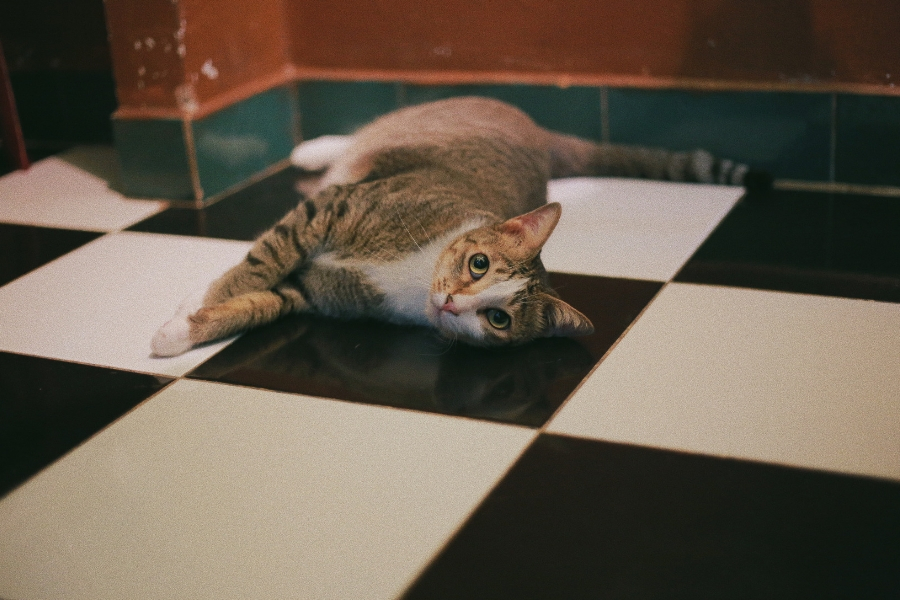
Photo by Tran Thanh on Unsplash
When considering the best flooring for pets, it’s important to look at what you might want to stay away from. Keep in mind these options aren’t completely off the table, but they may require more maintenance.
Carpet
It’s no secret carpet is not among the best flooring for pets. Of course, your furry friends will love it. Because carpet is soft, cushy and warm, cats and dogs will lay there all day long.
Meanwhile, all their fur gets forever trapped within the carpet fibers, along with pounds of dust and dirt. Soft floors are wonderful, but prepare to vacuum those hairballs more often.
Cons of Carpet Flooring for Pets
- Traps fur, dust and dirt
- Can store fleas, ticks and other pests your pet may bring in
Solid Hardwood
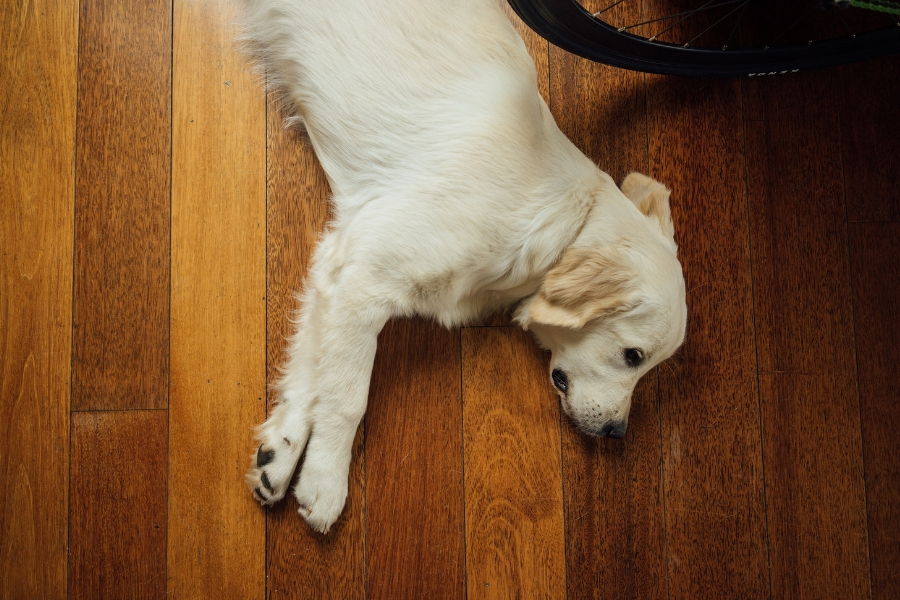
Photo by Ana Martin on Unsplash
Hardwood – my sweet dog Holly’s worst nightmare. Our kitchen floor only got worse for her as she got older. While dogs may love how cool the surface is to lay down on, trying to get up on their feet is quite the process that gets sadder and sadder to watch as they age.
In addition to it being a less-than-ideal running path for dogs, solid wood flooring will require more maintenance. Pets are not known for their cleanliness, and all of their little spills or accidents can damage your beautiful wood floors if not tended to promptly.
However, if you’re set on wood, engineered wood flooring is the best hardwood flooring for pets. It’s a little less fussy than solid hardwood and will still give you that gorgeous, classic look of real wood.
Cons of Hardwood Flooring for Pets:
- Pets may have trouble getting their footing
- Susceptible to scratches
- Easier to see pet hair
- Spills from water bowls or accidents can cause long-term damage if not cleaned promptly
Pet-Friendly Flooring FAQ

Photo by Hanne Van Oeckel on Unsplash
What is the best flooring for pets that have accidents?
Waterproof vinyl, tile and laminate are the best floors for pets that have accidents because they are easy to clean and stain resistant. A small patch of pet turf is nice to keep in the house as well if you are going to be gone for a long stretch of time. Another solution is to keep a rubber mat in front of the door if your cat or dog has accidents.
Will pet urine ruin laminate flooring?
Our pets are bound to have accidents from time to time. The important thing is to tend to the mess as soon as possible. While older stains can be cleaned up well, pet urine can etch your floor surface if left untreated.
To clean a pet accident on laminate flooring, simply wipe the area with a damp cloth. Sprinkle the surface with baking soda and spray with a little white vinegar. Let it sit for a while before wiping dry.
How can I get rid of a carpet stain where my dog had an accident?
A little white vinegar and baking soda will do the trick. After wiping up what you can, pour the vinegar over the stain to saturate the floor. Then, sprinkle a generous amount of baking soda over the soaked stain. Let the combination sit for a while as it magically lifts the stain and odor from the fibers of your carpet.
What is the best way to clean my dog’s accidents on hardwood flooring?
Wipe up the mess immediately, then clean your floor as normal with a gentle soap-and-water solution. You can also purchase cleaning products made specifically for pet accidents that will help alleviate the smell. Your best bet? Choose a 100% waterproof floor that doesn’t absorb any of the liquid.
What kind of dog flooring is best for his kennel?
Rubber dog kennel mats are perfect for your pup’s little home. Durable rubber mats provide an excellent anti-slip floor surface and will not harbor or grow any bacteria.
What if my dog tracks mud on the floors?
If you go with a waterproof floor, you can easily clean up mud tracks with a gentle soap-and-water cleaning solution.
My dog is a shedder! What flooring will be easiest to maintain pet hair?
Because they’re so easy to clean and maintain, floors with a hard surface are best for dogs who shed. Carpet will be your worst nightmare because fur gets trapped within the fibers. If you do have carpet, be sure to vacuum frequently.
What type of flooring is best for an older pet?
Veer away from hardwood and laminate floors – older pets who are slowing down may have trouble getting their footing. Plus, if your older pet has accidents more often it could cause long-term damage to your floor. Waterproof vinyl or tile is the best flooring for dogs that have accidents frequently.
5 Maintenance Tips for Pet-Friendly Flooring
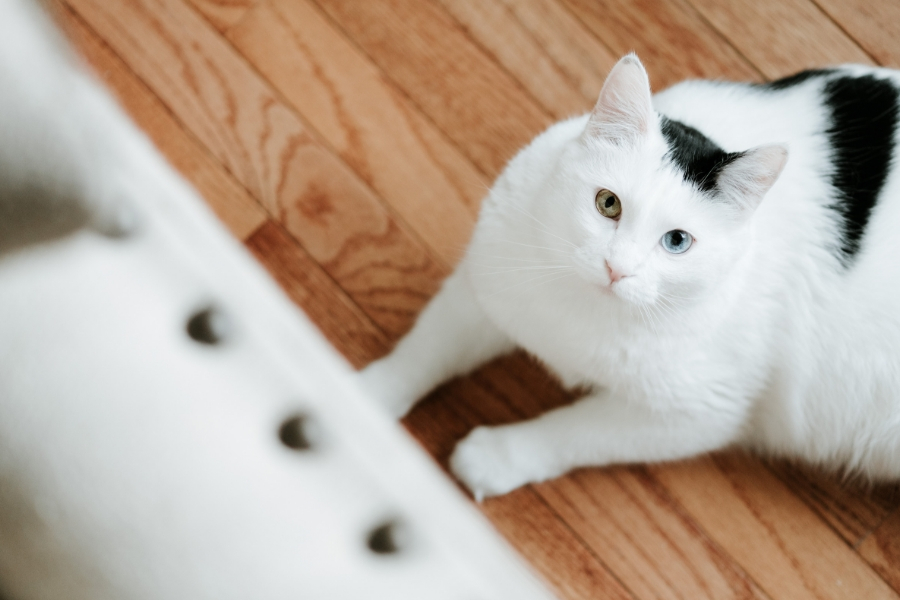
Photo by zelle duda on Unsplash
With sharp kitty claws, muddy paws and puppy accidents, your furry friends can quickly become your worst nightmare if they’re ruining your floors. Keep your floors shiny as new (and your relationship with your pet a loving one) with these maintenance tips:
- Trim your pet’s nails regularly to keep them from making marks on your nice floors.
- Place a mat down at each entrance to catch the dirt your pet brings in. You may also want to keep a towel near the door to wipe his paws before he comes in the house.
- Rawhide bones can leave greasy stains on your floor. If your dog loves these, let him enjoy them outside. Stick to rubber toys like a Kong for indoors.
- Brush and bathe your cat or dog often to help catch all that hair before it ends up on your floor. Perform routine sweeping and vacuuming to clean up their accumulating hair.
When all else fails, choose a flooring color that matches your pet’s fur. - Place a rubber mat under your cat’s litter box and your pet’s food and water dishes to protect your flooring from spills.
Conclusion
No one wants to see their pup struggle to get to their feet or bottom out every time they come home (I mean, it might be a funny sight, but your pup will not like it!). Additionally, no one wants to compromise their relationship with their pet over spilled kitty litter.
Pet-friendly flooring is an important factor for any commercial pet care building or residential home with pets. Keep your floors looking fresh and your pets happy with comfortable, waterproof flooring.
Ready to support your interior style and your pet with one of the best floors for pets? Order free samples of some of our pet-friendly flooring today!

